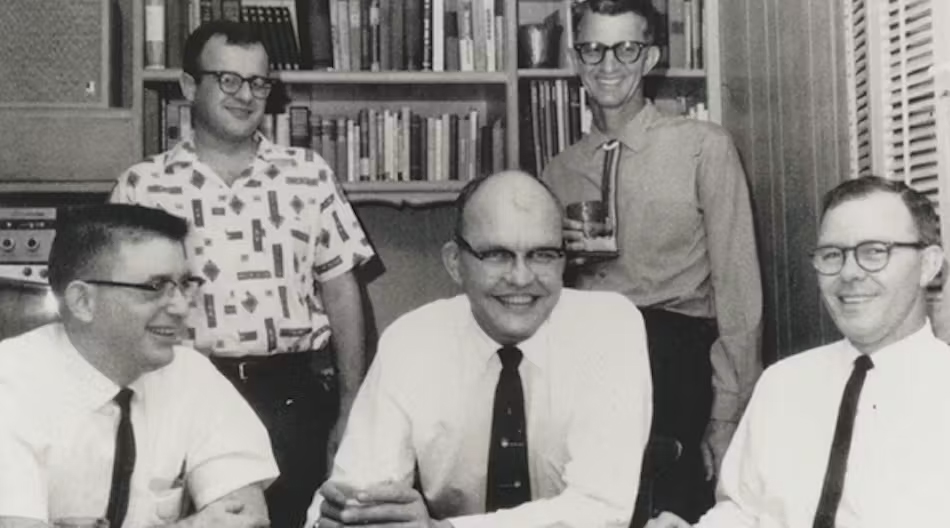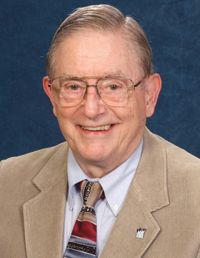
Dr. James R. “Bob” Biard ’54 is a pioneer whose innovations have helped shape the modern world. Best known for inventing the first gallium arsenide infrared light-emitting diode (LED), Biard’s research paved the way for visible-spectrum LEDs, which power everything from smartphone screens to fiber-optic communication.
An Aggie three times over, Biard earned his bachelor's, master’s and doctoral degrees in electrical engineering from Texas A&M University and later returned to serve as a faculty member.
Today, Biard’s legacy at Texas A&M extends beyond the classroom. His work remains part of the curriculum for semiconductor devices and digital systems courses, and his dedication to discovery and education inspires the Aggie engineering community.
The Department of Electrical and Computer Engineering is celebrating more than four decades of Biard’s affiliation with the institution. His impact as a researcher, inventor and educator is an illuminating reminder of the transformative impact that one dedicated mind can have across industries, institutions and generations.
While Biard worked alongside Gary E. Pittman at Texas Instruments in 1961, the two discovered the first infrared LED, launching an era of optoelectronics — devices that use electricity and light to work. This discovery laid the groundwork for the blue LED decades later, which earned a Nobel Prize and enabled full-spectrum, white LED lighting.

Biard was awarded 73 U.S. patents throughout his career for inventions including optical isolators, Schottky-clamped logic circuits, silicon metal-oxide-semiconductor read-only-memory (also known as MOS ROM), fiber-optic data links, and avalanche photodetectors. These technologies are all used in electronic systems and fiber-optic communication — the process of sending data using light.
The impact of Biard’s work is nearly immeasurable: logic circuits are found in consumer electronics and computer processors; data links are crucial to high-speed communication for data centers; LEDs are embedded in global infrastructure, found in traffic lights, televisions, medical devices, data centers, and even the headlights on cars. His work sparked exploration in lighting, embedded systems, communications and displays.
After leaving Texas Instruments in 1969, Biard continued leading innovation as vice president of research at Spectronics, Inc., which Honeywell later acquired. There, he served as chief scientist of the MICRO SWITCH Division, advancing the application of LEDs and photodetectors in integrated circuits and commercial systems.
Encouraged by Dr. Jack Kilby, Nobel laureate and distinguished professor of electrical engineering at Texas A&M, Biard returned to his alma mater in 1980 as an adjunct professor in the electrical and computer engineering department. Bringing decades of industry experience back into the classroom, he became a mentor and role model to generations of engineers.
Biard was elected to the National Academy of Engineering in 1991 — one of the highest professional honors for engineers — for his pivotal work in semiconductor LEDs and lasers, read-only memory, and logic circuits.